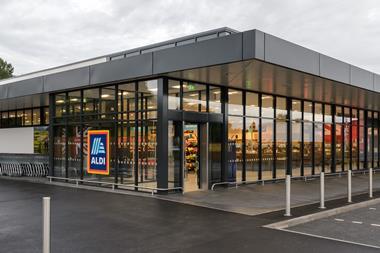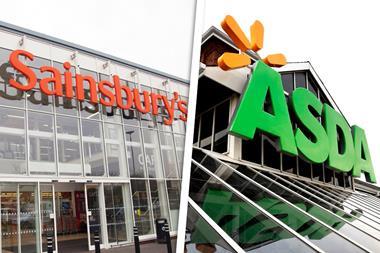In this special analysis, former Competition Commission inquiry director Andrew Taylor unpicks the latest developments in the Sainsbury’s-Asda probe
In fast-tracking its Sainsbury’s-Asda merger review to a second phase last week, the CMA found that there was a realistic prospect of competition in grocery retailing being lost in 463 local areas, and flagged at least seven separate ways in which consumers might be harmed by the merger. While these early CMA findings need to be treated with some caution, as their principle aim is to justify a second phase review, but it nonetheless flags significant risks that may make clearance for Sainsbury’s and Asda tough in the second phase, when the CMA will decide whether the merger should be permitted and the number of stores to be divested as part of this in order to do so.
The challenge for Sainsbury’s and Asda is to present a compelling narrative about changes in the market that justify a more lenient approach. This is particularly important in a second phase review, where decision making responsibility passes to a CMA inquiry panel made up of part-time members. The ingredients for such a narrative are likely to involve the rise of Aldi and Lidl, more frequent convenience shopping, and the growth in online shopping.
It will be critical for Sainsbury’s and Asda to avoid presenting a grab-bag of arguments, including those previously fought and lost, which lacked the coherence and consistency needed to persuade the CMA’s inquiry panel of their overall merits of their case.
Incoherent arguments?
Several concerns over the overall consistency and coherence of the Sainsbury’s and Asda arguments can already been seen in the referral decision. According to the CMA, the two grocers would like it to blur the long-standing distinction between large one-stop supermarkets and mid-size stores. This argument has already been made - unsuccessfully - many times previously. Yet the CMA also reports Sainsbury’s and Asda as arguing that customers are travelling longer distances to large supermarkets than the competition authorities have previously found. If customer behaviour implies a growing preference for convenience and online shopping, why would customers be travelling further to large supermarkets?
Opinion: Can CMA deal with Sainsbury’s-Asda after failing on Tesco-Booker?
Sainsbury’s and Asda seem assured that the CMA will treat Aldi and Lidl as competitors like other retailers such as Tesco and Morrisons. But the CMA was keen in its referral decision to hose down any interpretation of last year’s Tesco-Booker clearance as softening its historical position that the discounters do not compete as closely with full-range large stores as these stores do with each other.
So it isn’t necessarily significant for the competition analysis that Aldi has a large basket size. What’s more important is whether customers switch between Aldi and Sainsbury’s-Asda. It is the similarity of the offer at Asda/Sainsbury’s/Tesco/Morrisons that makes them closer competitors to each other than Aldi or Lidl.
Moreover, Tesco’s launch of the Jack’s discount chain may well have dealt a significant blow to Sainsbury’s and Asda’s arguments on this point. If Tesco has opened a new store format to compete more effectively with Aldi and Lidl, it makes it hard for Sainsbury’s and Asda to argue their own stores compete strongly with Aldi and Lidl.
Store divestments
If the CMA’s concerns are limited to the effect on local competition, merger clearance is likely to be dependent on store divestments. My back-of-an-envelope estimate suggests 80 to 180 stores could be at risk. (This compares to the 50 stores that Morrisons had to sell when it acquired Safeway in 2004.)
A divestment of this scale would also face challenges in terms of ensuring stores were sold to other retailers without presenting further competition problems in these local markets.
The CMA has also flagged concerns about the effect of the merger at a national level. This would be a significant change from the groceries market investigation I directed at the Competition Commission in 2007-08, where competition at a national level was viewed as an aggregation of local market activity. Having said that, the CMA and its predecessors have not always been consistent on this point.
Opinion: Sleeping with the enemy will become retail’s ‘new normal’
If there is a national effect, and it cannot be somehow assuaged through local store divestments, it would open the door to a complete prohibition of the merger.
Sainsbury’s and Asda could argue online grocery retailing has increased choice and competition. In many cases, households can access online shopping from the major grocery retailers well outside the usual catchments the CMA associates with physical stores. Whether the CMA is willing to accept this argument remains to be seen.
Finally, the CMA will no doubt receive many submissions raising concerns about the effect of the merger on food and drink suppliers. The CMA generally treats these arguments cautiously, and I believe that the current make-up of CMA inquiry panels makes them even more likely to be cautious.
Even in the groceries market investigation, which led to a revised groceries supply code of practice GSCOP and the introduction of an Adjudicator, there was dissent on the panel about the findings and recommendations in this area. The Tesco/Booker decision showed the difficulties in evidencing each element of the chain of logic required for an adverse finding on supply chain effects. What’s more, a combined Sainsbury’s-Asda (before any divestments) would be about the same size as Tesco, so the CMA would need to be convinced it was factors other than the absolute size of the merged Sainsbury’s-Asda business that would cause problems.
Andrew Taylor is a partner at Aldwych Partners and former senior director at the Competition Commission, where he led the 2007-8 groceries market investigation













No comments yet